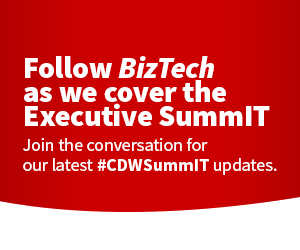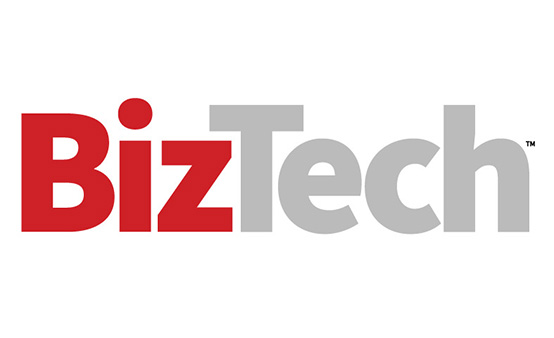The Olympics DaaS deployment follows CDW’s work with the 2020 census. CDW provided more than 700,000 devices for the census and was responsible for managing, recovering and sanitizing the devices across the full lifecycle.
The technology challenge of the 2028 Games goes well beyond the massive DaaS deployment. As the premier technology partner, CDW will also provide 5G connectivity and other essential technology services for the Games, which Harris likened to holding seven Super Bowls a day, every day, for 28 days.
“This is going to be the most technologically advanced Games ever held,” Harris said.
2. With AI, Don’t Just Replicate — Reimagine
CDW has implemented artificial intelligence across its enterprise, including the deployment of 10,000 Microsoft Copilot licenses and numerous AI agents. Officials from the company, including Vice President of Digital Product Ben Weiss, offered guidance to SummIT attendees based on CDW’s experience with AI.
Weiss advised IT leaders attending the SummIT to go beyond simply using AI to replicate human efforts. Instead, he said, organizations should rethink processes to take advantage of AI’s specific strengths and how it operates.
“Many organizations try to use AI to replace humans in workflows,” he said. “But there are intrinsic qualities to AI models — the ability to think — that just makes this technology fundamentally different from anything you’ve seen before.”
Organizations that figure out how to best take advantage of these capabilities will give themselves an edge.
DISCOVER: How to ride the waves of data.
3. Quantum Readiness Starts Now
Organizations should be preparing now for the arrival of widely used quantum computing, said Erik Van Woerden, a senior manager within Palo Alto Networks' Network Security Go-To-Market team. Quantum computing isn’t expected to become widely available in the next few years, but observers predict that it will become much more widely used in roughly five to 10 years.
This represents a heightened risk for many organizations because quantum computers have the power to unlock many common modern encryption schemes. Encrypted data is essentially useless when it is stolen, but quantum decryption has the power to solve that problem for the thieves.
“Many nation-states and threat actor groups are harvesting data now, and they’re going to use quantum computers to decrypt that data so they can use it against companies,” Van Woerden said.
Data that is stolen now may sit for several years before the thieves are able to decrypt it, but once it has been compromised, there’s nothing an organization can do to prevent its decryption. Van Woerden advises IT teams to start preparing now for the arrival of quantum computing and its decryption capabilities in the coming decade. Firewalls that use quantum-resistant cryptography are one type of solution that can help organizations get ahead of this issue.













